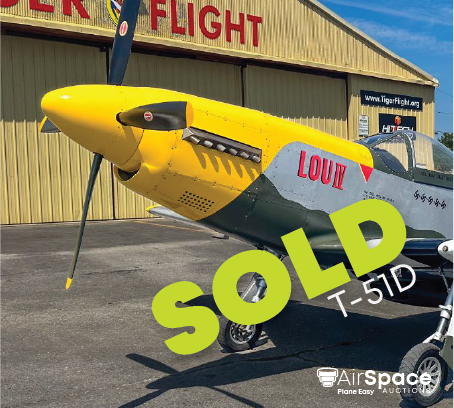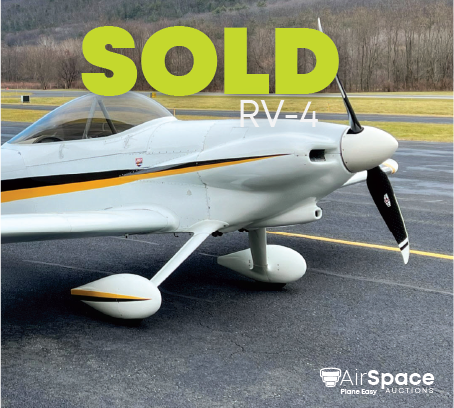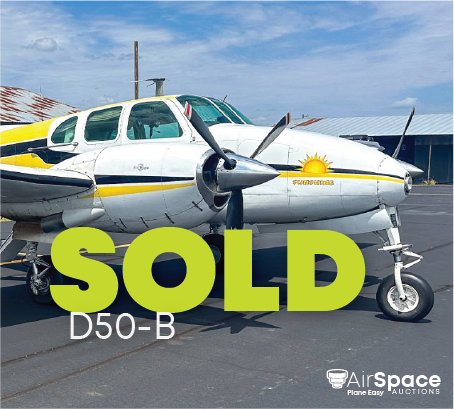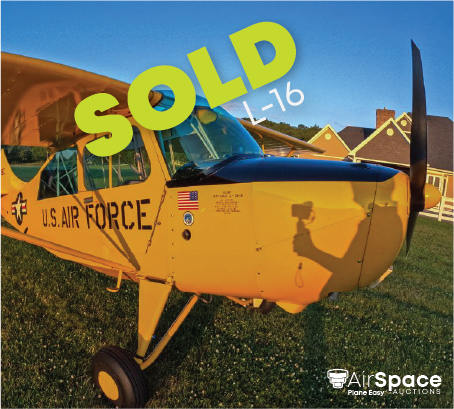
Introduction: Using Auction Theory to Determine Aircraft Value
When it comes to buying or selling an aircraft, determining its value is a crucial step in the process. Auction theory provides a valuable framework for understanding how value is assessed and bids are placed in a competitive market. By applying auction theory principles, both buyers and sellers can gain confidence in the pricing of the aircraft.
Auction theory is a field of study that examines the behavior of bidders and sellers in an auction setting. It uses mathematical models and economic principles to analyze the factors that influence auction outcomes. By understanding these factors, individuals can make informed decisions when participating in aircraft auctions.
For example, let’s say you are interested in purchasing a used Cessna aircraft. By utilizing the principles of auction theory, you can determine the value of the aircraft based on various factors such as its condition, age, and market demand. This information allows you to place a competitive bid that reflects the true worth of the aircraft.
Performing an Independent Aircraft Valuation
One of the key aspects of auction theory is the importance of an independent valuation. This involves assessing the aircraft’s worth based on various factors such as its condition, age, maintenance history, and market demand. An independent valuation is essential for establishing a fair market price that is free from biases. This not only increases buyer confidence but also provides sellers with a realistic expectation of what their aircraft is worth.
To perform an independent aircraft valuation, there are several tools and resources available. One widely used tool is the VREF, which provides comprehensive and up-to-date aircraft valuation data. Additionally, researching current market asking prices for similar aircraft can help determine a reasonable price range. It is important to note that the actual selling price of airplanes in auctions is often substantially lower than the broker asking price, typically ranging from 5% to 25% lower. Understanding this market dynamic is crucial for both buyers and sellers.

For example, let’s say you are interested in purchasing a used Cessna aircraft. By utilizing the VREF tool and researching the current market prices for similar Cessna models, you can determine a fair valuation for the aircraft you are interested in. This independent valuation will provide you with the confidence to place a competitive bid in the auction, knowing that you are not overpaying for the aircraft.
In addition to the VREF tool, it is also important to consider other factors that can affect the value of the aircraft. This may include the aircraft’s maintenance records, any recent upgrades or modifications, and the overall demand for that particular model in the market. By taking these factors into account, you can further refine your valuation and ensure that you are making an informed decision when placing your bid.
Factors Affecting Auction Prices
In the auction setting, several factors come into play that can influence the final price of the aircraft. One important factor is the bidder’s value, which refers to the maximum amount each bidder is willing to pay for the aircraft. Bidders determine their value based on comprehensive research and their own assessment of the aircraft’s worth. This value may vary among bidders, leading to different bids being placed.
The bidder’s value is influenced by various factors such as the bidder’s perception of the aircraft’s condition, its historical significance, and its future potential. For example, if a bidder believes that a vintage warbird aircraft has a high historical value and is likely to appreciate in the future, they may be willing to pay a higher price compared to another bidder who does not share the same perception.
Another factor that can impact auction prices is the concept of the winner’s curse. This phenomenon occurs when uninformed bidders overpay for an item due to incomplete information or a lack of understanding of the true value. In the context of aircraft auctions, bidders who do not conduct thorough research or rely on inaccurate valuations may fall into the trap of overpaying for an aircraft.
To mitigate the risk of the winner’s curse, it is crucial for bidders to gather as much information as possible about the aircraft before placing their bid. This includes conducting a comprehensive aircraft inspection, reviewing maintenance records, and seeking expert opinions. By having a clear understanding of the aircraft’s true value, bidders can avoid overpaying and make more informed bidding decisions.

Additionally, synergies and collusion among bidders can also affect auction prices. Bidders may form alliances or collude with each other to increase their chances of winning the auction. By working together, bidders can strategically place bids that outprice other participants. While collusion is typically discouraged and may be considered unethical, it is important to be aware of its potential impact on auction outcomes.
To illustrate this, let’s consider a scenario where multiple bidders are interested in a highly sought-after vintage warbird aircraft. Each bidder conducts their own research and determines their maximum bid based on their valuation of the aircraft. However, if two bidders form an alliance and agree to bid aggressively, they may be able to outprice other bidders and secure the aircraft at a higher price than it may be worth. This highlights the importance of conducting independent research and being aware of potential collusion in the auction setting.

Strategies for Placing Winning Bids
Placing a winning bid in an aircraft auction requires careful strategy and consideration. One crucial strategy is to set a maximum bid limit to avoid overpaying for the aircraft. By determining the maximum amount you are willing to pay based on your independent valuation, you can set a boundary that prevents you from getting caught up in the excitement of the auction and bidding beyond what the aircraft is worth.
It is also important to consider the bidding increments and timing when placing your bids. Strategic use of bidding increments can help you stay competitive and deter other bidders from outpricing you. By incrementally increasing your bid amount in strategic intervals, you can signal to other bidders that you are serious and willing to outbid them. This can create a psychological advantage and potentially discourage other bidders from continuing to raise their bids.

Furthermore, researching the seller’s motivation and unique selling points for the aircraft can give you a competitive edge. Understanding why the seller is listing the aircraft for auction and identifying any unique features or advantages can help you craft a competitive bid. For example, if the seller is motivated to sell quickly or is offering additional incentives, you can leverage this information to your advantage when placing your bid.
For instance, imagine you are participating in an online auction for a Piper aircraft. By setting a maximum bid limit based on your independent valuation, researching the seller’s motivation, and strategically utilizing bidding increments, you can increase your chances of placing a winning bid. These strategies help you stay competitive and make informed decisions during the bidding process.
Benefits of Having a Partner in the Bidding Room
Having a partner in the bidding room can provide several benefits when participating in an aircraft auction. Firstly, a partner can provide support and help maintain control over the final price. By discussing your bidding strategy with a partner beforehand, you can rely on them to keep you in check during the auction and prevent you from overpaying due to impulsive bidding.
Furthermore, having a partner increases your chances of winning the auction through collaboration and shared insights. Your partner may have access to additional information or resources that can be valuable in making informed bidding decisions. By pooling your knowledge and resources, you can make stronger and more competitive bids.
Having a partner can also enhance the enjoyment and excitement of the bidding experience. Bidding on an aircraft can be a thrilling and exhilarating experience, and sharing that experience with a partner can make it even more enjoyable. Whether you win or lose the auction, having a partner by your side can provide emotional support and make the experience more memorable.
For example, let’s say you and a friend are both interested in purchasing a Beechcraft aircraft. By attending the auction together and discussing your strategies, you can support each other in making informed bidding decisions. Your friend may have unique insights or information that you were not aware of, which can improve your chances of securing the aircraft at a favorable price. Additionally, sharing the excitement and anticipation of the auction experience with a partner can make it a more enjoyable and memorable event.

Researching and Utilizing Keywords
When conducting online searches for aircraft auctions, utilizing relevant keywords is crucial for obtaining accurate and comprehensive results. Primary keywords such as “Cessna,” “airplane,” “aircraft,” “buy airplane,” “sell airplane,” “avionics upgrade,” “warbird,” “tailwheel,” “tricycle gear,” “sell Beechcraft,” “sell Piper,” “online auction,” and “aircraft auction” can help narrow down the search and provide targeted results.
In addition to primary keywords, it is also important to research and utilize related keywords to refine your search and gather comprehensive information. Related keywords can include specific aircraft models, features, or categories that you are interested in. By incorporating these keywords into your search, you can find more specific and relevant auction listings and information.
For instance, if you are looking for a premium aircraft in an online auction, you can refine your search by using related keywords such as “premium aircraft,” “high-end airplane,” or “luxury aircraft.” By incorporating these keywords into your search, you can focus on auctions that offer the type of aircraft you are interested in and filter out irrelevant listings.
In addition to keywords, utilizing online platforms and resources dedicated to aircraft auctions can further enhance your research process. These platforms often provide comprehensive listings, auction details, and additional resources that can help you gather the necessary information to make informed bidding decisions.
Case Studies: Successful Auction Bids
Examining real-life examples of successful auction bids can provide valuable insights into the strategies and factors that contribute to a winning bid. By analyzing these case studies, you can learn from the experiences of others and apply their strategies to your own bidding process.
One example of a successful auction bid is the case of a vintage warbird aircraft. The winning bidder conducted thorough research and determined the true value of the aircraft based on its historical significance, rarity, and condition. They set a maximum bid limit and strategically utilized bidding increments to outprice other bidders. Additionally, the bidder collaborated with a partner who had expertise in vintage aircraft, providing valuable insights and support throughout the auction process.
From this case study, we can learn the importance of conducting independent research, setting a maximum bid limit, and leveraging partnerships to increase our chances of placing a winning bid. By applying these strategies and factors, we can enhance our own auction experiences and achieve successful outcomes.
Another case study involves the sale of an aircraft with upgraded avionics. The seller highlighted the enhanced features and benefits of the avionics upgrade in their auction listing. The winning bidder recognized the value of these upgrades and placed a competitive bid based on their assessment of the aircraft’s worth. In this case, the bidder’s ability to recognize the unique selling points of the aircraft and incorporate them into their bidding strategy played a significant role in securing the aircraft at a favorable price.
These case studies demonstrate the importance of conducting thorough research, evaluating the unique features of the aircraft, and incorporating them into your bidding strategy. By understanding the specific characteristics and advantages of the aircraft you are interested in, you can make more informed bidding decisions and increase your chances of success.

Common Pitfalls to Avoid
In the auction process, there are several common pitfalls that both buyers and sellers should be aware of. One of the most significant pitfalls is inaccurate valuation. Failing to conduct a thorough valuation of the aircraft can result in overpricing or underpricing, leading to unrealistic expectations or missed opportunities.
To avoid this pitfall, it is crucial to gather comprehensive information about the aircraft’s condition, maintenance history, and market demand. By utilizing tools like VREF and consulting experts in the field, you can ensure that your valuation is accurate and realistic.
Another pitfall to avoid is overconfidence. While it is important to have confidence in your bidding strategy, being overly confident can lead to impulsive and irrational bidding. It is essential to stay grounded and maintain a clear understanding of the aircraft’s value and your own limitations.
Additionally, being aware of potential pitfalls in the bidding process, such as collusion among bidders or incomplete information, is crucial. By staying informed and conducting thorough research, you can make informed decisions and mitigate the risks associated with these pitfalls.
For example, let’s say you are participating in an online auction for a premium aircraft. The bidding is competitive, and you are determined to secure the aircraft at a favorable price. However, you must be cautious not to let overconfidence cloud your judgment. By conducting thorough research, setting a maximum bid limit, and being aware of potential pitfalls, you can navigate the auction process with confidence and avoid making impulsive bidding decisions.

Conclusion: Empowering Successful Aircraft Transactions
In conclusion, auction theory provides valuable insights and strategies for determining the value of aircraft and placing winning bids. By performing independent valuations, understanding the factors that influence auction prices, utilizing effective bidding strategies, and avoiding common pitfalls, both buyers and sellers can navigate the auction process with confidence and achieve successful outcomes. Thorough research and strategic bidding are key to empowering successful aircraft transactions.
By applying the principles of auction theory, individuals can make informed decisions when participating in aircraft auctions. Whether you are a buyer looking to secure an aircraft at a fair price or a seller seeking to maximize the value of your aircraft, understanding auction theory can give you a competitive edge.
By performing independent valuations and utilizing tools like VREF, buyers can determine the true value of an aircraft and avoid overpaying. Setting a maximum bid limit and strategically utilizing bidding increments can help buyers stay competitive and increase their chances of winning the auction.
Similarly, sellers can benefit from auction theory by understanding the factors that influence auction prices and strategically marketing their aircraft. Highlighting unique selling points, such as avionics upgrades or rare features, can attract more bidders and potentially drive up the final sale price.
In both cases, having a partner in the bidding room can provide support, increase the chances of success, and enhance the overall auction experience. By pooling resources, sharing insights, and maintaining control over the bidding process, partners can navigate the complexities of the auction environment more effectively.
In summary, auction theory offers valuable tools and strategies for placing value-based winning bids in aircraft auctions. By conducting independent valuations, understanding the factors that influence auction prices, utilizing effective bidding strategies, and avoiding common pitfalls, individuals can empower themselves to make informed decisions and achieve successful outcomes in the aircraft market. Thorough research, strategic bidding, and partnerships are the keys to success in the auction arena.
